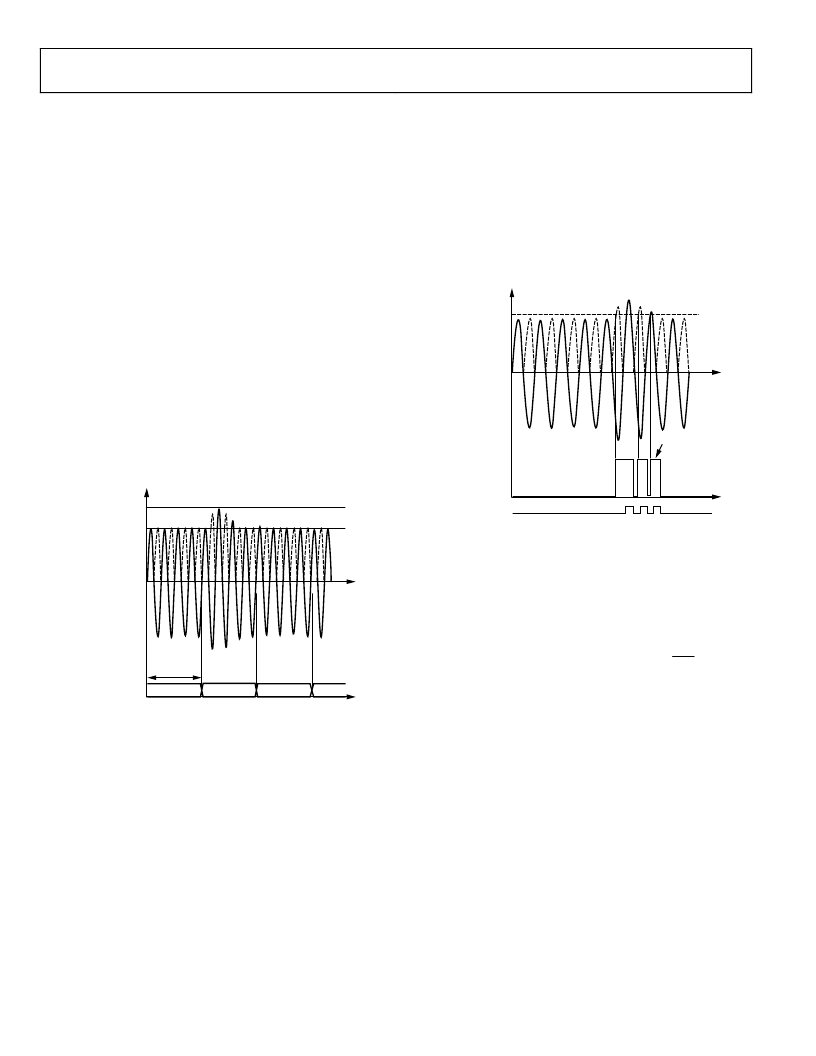- 您現(xiàn)在的位置:買賣IC網(wǎng) > PDF目錄373980 > ADE7758 (Analog Devices, Inc.) Poly Phase Multifunction Energy Metering IC with Per Phase Information PDF資料下載
參數(shù)資料
| 型號: | ADE7758 |
| 廠商: | Analog Devices, Inc. |
| 英文描述: | Poly Phase Multifunction Energy Metering IC with Per Phase Information |
| 中文描述: | 多相多功能電能計(jì)量IC每相位信息 |
| 文件頁數(shù): | 22/68頁 |
| 文件大?。?/td> | 1584K |
| 代理商: | ADE7758 |
第1頁第2頁第3頁第4頁第5頁第6頁第7頁第8頁第9頁第10頁第11頁第12頁第13頁第14頁第15頁第16頁第17頁第18頁第19頁第20頁第21頁當(dāng)前第22頁第23頁第24頁第25頁第26頁第27頁第28頁第29頁第30頁第31頁第32頁第33頁第34頁第35頁第36頁第37頁第38頁第39頁第40頁第41頁第42頁第43頁第44頁第45頁第46頁第47頁第48頁第49頁第50頁第51頁第52頁第53頁第54頁第55頁第56頁第57頁第58頁第59頁第60頁第61頁第62頁第63頁第64頁第65頁第66頁第67頁第68頁

ADE7758
Note that the integrator has a 20 dB/dec attenuation and
approximately 90° phase shift. When combined with a di/dt
sensor, the resulting magnitude and phase response should be a
flat gain over the frequency band of interest. However, the di/dt
sensor has a 20 dB/dec gain associated with it and generates
significant high frequency noise. A more effective antialiasing filter
is needed to avoid noise due to aliasing (see the Theory of
Operation section).
Rev. A | Page 22 of 68
When the digital integrator is switched off, the ADE7758 can be
used directly with a conventional current sensor, such as a
current transformer (CT) or a low resistance current shunt.
PEAK CURRENT DETECTION
The ADE7758 can be programmed to record the peak of the
current waveform and produce an interrupt if the current
exceeds a preset limit.
Peak Current Detection Using the PEAK Register
The peak absolute value of the current waveform within a
fixed number of half-line cycles is stored in the IPEAK
register. Figure 47 illustrates the timing behavior of the
peak current detection.
0
L2
L1
CONTENT OF
IPEAK[7:0]
00
L1
L2
L1
NREGISTER
CURRENT WAVEFORM
(PHASE SELECTED BY
PEAKSEL[2:0] IN
MMODE REGISTER)
Figure 47. Peak Current Detection Using the IPEAK Register
Note that the content of the IPEAK register is equivalent to Bit 14
to Bit 21 of the current waveform sample. At full-scale analog
input, the current waveform sample is 0x2851EC . The IPEAK
at full-scale input is therefore expected to be 0xA1.
In addition, multiple phases can be activated for the peak
detection simultaneously by setting multiple bits to logic high
among the PEAKSEL[2:4] bits in the MMODE register. These
bits select the phase for both voltage and current peak measure-
ments. Note that if more than one bit is set, the VPEAK and
IPEAK registers can hold values from two different phases, that
is, the voltage and current peak are independently processed
(see the Peak Current Detection section).
Note that the number of half-line cycles is based on counting
the zero crossing of the voltage channel. The ZXSEL[2:0] bits in
the LCYCMODE register determine which voltage channels are
used for the zero-crossing detection. The same signal is also
used for line cycle energy accumulation mode if activated (see
the Line Cycle Accumulation Mode Register (0x17) section).
OVERCURRENT DETECTION INTERRUPT
Figure 48 illustrates the behavior of the overcurrent detection.
0
IPINTLVL[7:0]
READ RSTATUS
REGISTER
PKI INTERRUPT FLAG
(BIT 15 OF STATUS
REGISTER)
PKI RESET LOW
WHEN RSTATUS
REGISTER IS READ
CURRENT PEAK WAVEFORM BEING MONITORED
(SELECTED BY PKIRQSEL[2:0] IN MMODE REGISTER)
Figure 48. ADE7758 Overcurrent Detection
Note that the content of the IPINTLVL[7:0] register is equivalent
to Bit 14 to Bit 21 of the current waveform sample. Therefore,
setting this register to A1 (hex) represents putting peak detection
at full-scale analog input. Figure 48 shows a current exceeding a
threshold. The overcurrent event is recorded by setting the PKI
flag (Bit 15) in the interrupt status register. If the PKI enable bit
is set to Logic 1 in the interrupt mask register, the IRQ logic
output goes active low (see the ADE7758 Interrupts section).
Similar to peak level detection, multiple phases can be activated
for peak detection. If any of the active phase produces waveform
samples above the threshold, the PKI flag in the interrupt status
register is set. The phase of which overcurrent is monitored is
set by the PKIRQSEL[2:0] bits in the MMODE register (see
Table 15).
VOLTAGE CHANNEL ADC
Figure 49 shows the ADC and signal processing chain for the
input VA in the voltage channel (same for VB and VC).
相關(guān)PDF資料 |
PDF描述 |
|---|---|
| ADE7758ARW | Poly Phase Multifunction Energy Metering IC with Per Phase Information |
| ADE7758ARWRL | Poly Phase Multifunction Energy Metering IC with Per Phase Information |
| ADE7758ARWZ | Poly Phase Multifunction Energy Metering IC with Per Phase Information |
| ADE7758ARWZRL | Poly Phase Multifunction Energy Metering IC with Per Phase Information |
| ADE7759ARSRL | Active Energy Metering IC with di/dt Sensor Interface |
相關(guān)代理商/技術(shù)參數(shù) |
參數(shù)描述 |
|---|---|
| ADE7758ARW | 制造商:Analog Devices 功能描述:Energy Measurement 24-Pin SOIC W 制造商:Analog Devices 功能描述:IC ENERGY METER |
| ADE7758ARWRL | 制造商:Analog Devices 功能描述:Energy Measurement 24-Pin SOIC W T/R 制造商:Analog Devices 功能描述:IC ENERGY METER |
| ADE7758ARWZ | 功能描述:IC ENERGY METERING 3PHASE 24SOIC RoHS:是 類別:集成電路 (IC) >> PMIC - 能量測量 系列:- 產(chǎn)品培訓(xùn)模塊:Lead (SnPb) Finish for COTS Obsolescence Mitigation Program 標(biāo)準(zhǔn)包裝:2,500 系列:* |
| ADE7758ARWZ | 制造商:Analog Devices 功能描述:ENERGY METERING IC 制造商:Analog Devices 功能描述:IC, POLY-PHASE ENERGY METERING, SOIC-24 |
| ADE7758ARWZ | 制造商:Analog Devices 功能描述:IC ENERGY METER 3 PHASE SOIC-24 |
發(fā)布緊急采購,3分鐘左右您將得到回復(fù)。